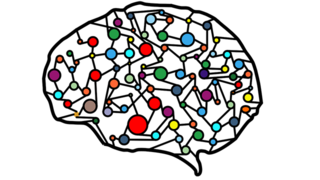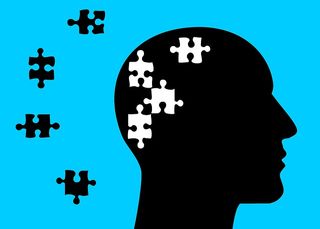Anxiety
Understanding Brain Circuits of Fear, Stress, and Anxiety
Researchers now believe anxiety disorders and PTSD are whole brain conditions.
Posted September 30, 2019 Reviewed by Kaja Perina

Anxiety disorders (like social anxiety) and stress disorders (like PTSD) are among the most common mental health diagnoses with a lifetime prevalence of almost 30%. New technologies like fMRI, which allow us to scan the brain in real time have vastly increased our knowledge of the brain circuits that underly anxiety and fear. Experts now think of anxiety disorders and PTSD as “whole brain” disorders involving the complex interplay of neurons across different brain areas. More specifically, anxiety and stress disorders seem to involve hyper-activation of brain areas that help us detect and respond to threats, along with reduced activation of brain areas that help us modulate our reactivity to fear and stress. These brain areas and circuits will be described in more detail below.
Two pathways of fear
Neuroscientist Joseph LeDoux’s research with rodents helped us understand the brain circuitry of fear. LeDoux suggested there was both a “low road” and a “high road” of fear. The “low road” involved activation of the amygdala, a structure in the midbrain that served to detect a threat to our survival and set into motion a biobehavioral response that would facilitate fighting or fleeing. This response involves faster breathing, rapid heart rate, sweating and other physiological reactions that we subjectively experience as fear. This “emergency” fear reaction is very rapid in order to maximize our chances of surviving. LeDoux also identified a “high road” in which information travelled to the prefrontal cortex (the CEO or executive functioning center of the brain) first where it was processed before being relayed to the amygdala. This pathway was slower, allowing time for a more thorough analysis of the situation. In this way, the prefrontal cortex could “reign in” an overactive amygdala, resulting in more modulated and nuanced fear response to varying levels of threat.
In people with anxiety or stress disorders (PTSD) the amygdala is hyper-responsive to threat while the prefrontal cortex is under-active or lacks sufficient neural connections with the amygdala to calm things down. The result is a more intense and/or extended fear response.
Fear versus worry
More recently, brain researchers have found that fear and anxiety/worry may have distinct neural circuitry. Fear can be thought of as the response to an immediate and present danger, while anxiety/worry involves a response to uncertain and possibly negative future events. While fear-arousal comes from the amygdala, it seems that anxiety is associated with a part of the brain known as the bed nucleus of the stria terminalis (BNST). THE BNST is a structure in the basal forebrain with extensive connectivity to many other brain regions involved in bodily functions, threat response, memory, attachment, and information processing. The BNST is more active than the amygdala under conditions of uncertainty where something bad could happen (e.g., waiting for the results of a medical test or an employment interview) while the amygdala is more active to present threat.
Other brain areas involved in fear, stress, and anxiety
The medial prefrontal cortex

The medial prefrontal cortex (MPFC) is a part of the prefrontal cortex involved in processing information about ourselves and other people. Studies of PTSD patients find less MPFC activation overall in this group compared to healthy controls. However, people with PTSD have more MPFC activation than controls in response to fearful faces. Similar effects are found in people with social anxiety—less activation to threat and more activation to social tasks. Low activation in response to threat can be thought of as a deficit in emotion regulation while high activation may be an attempt to overcompensate for excessive fear responding in the lower brain regions, although more research is needed to clarify this.
Other studies have looked at the degree of connectivity between the MPFC and the amygdala in people with anxiety and stress disorders versus healthy controls. These studies have found less connectivity between the amygdala and MPFC in people with PTSD and social anxiety disorder. This suggests that the MPFC is less able to regulate anxious responding in these conditions.
The insula
The insula is a small area of the cortex located deep within the lateral sulcus of the brain and not visible from the surface. It has a number of functions, including higher-level thinking, emotional responding, and sensory processing. In people with a social anxiety disorder or PTSD, the insula has been shown in fMRI studies to be overactive in response to threats. In social anxiety disorder, both medication and psychotherapy decreased this over activation. Thus, the insula seems to be a fear and threat response generating area and a potentially promising focus when we seek new ways to decrease fear.
The anterior cingulate cortex
The anterior cingulate cortex (ACC) is situated between the neocortex and the emotional areas of the brain (amygdala, hippocampus). Its functions are complex but seem to include monitoring the outcomes of situations and socially-driven interactions.
Different parts of the ACC seem to have different functions when it comes to fear and anxiety. The dorsal part of the ACC (dACC) seems to be involved in magnifying our response to threat and is hyperactivated in people with panic disorder, phobias, and PTSD. Cognitive-behavioral therapy has been found to decrease dACC activation in people with social anxiety, perhaps by helping to change the way we perceive self and others in social situations (although this is speculative).
The rostral part of the ACC (rACC) conversely, seems to be involved in regulating fear and threat response. Lowered activation in the rACC in response to threat (meaning: less regulation of the fear response) has been shown in people with social anxiety disorder, PTSD, and generalized anxiety disorder
The hippocampus
The hippocampus, which is our verbal memory center, communicates directly with the amygdala and with the prefrontal cortex. Thus the hippocampus can help us damp down fear by producing memories that serve to calm us down or increase our confidence to manage the situation. For example, we may remember that the last time we had a panic attack we didn’t die and felt better after awhile, Or we may remember that we survived the trauma and are no longer trapped in a life-threatening situation. On the other hand, the hippocampus can increase our anxiety or worry by reminding us of other negative memories when we faced similar situations. For example, when we are about to talk to a new person at a party we may remember being snubbed or excluded at a previous gathering.
In studies of people with anxiety disorders and PTSD, the hippocampus is smaller in volume and density, compared to healthy controls. The hippocampus is also more activated in response to threats in people with PTSD, phobias, and social anxiety disorder, compared to healthy controls.
Summary
New research using fMRI imaging to scan the brain in real-time has shown that anxiety and stress disorders seem to be “whole brain” conditions, rather than being limited to one or two brain areas. Brain areas involved in generating fear and threat responses are the amygdala, the insula and the dorsal anterior cingulate. Those regions involved in modulating and altering the fear and threat response include the medial prefrontal cortex, the rostral anterior cingulate and the hippocampus. New understanding of the brain circuitry underlying fear should inspire new ways of treating anxiety and stress disorders or at least help us understand which treatments work and why.
References




